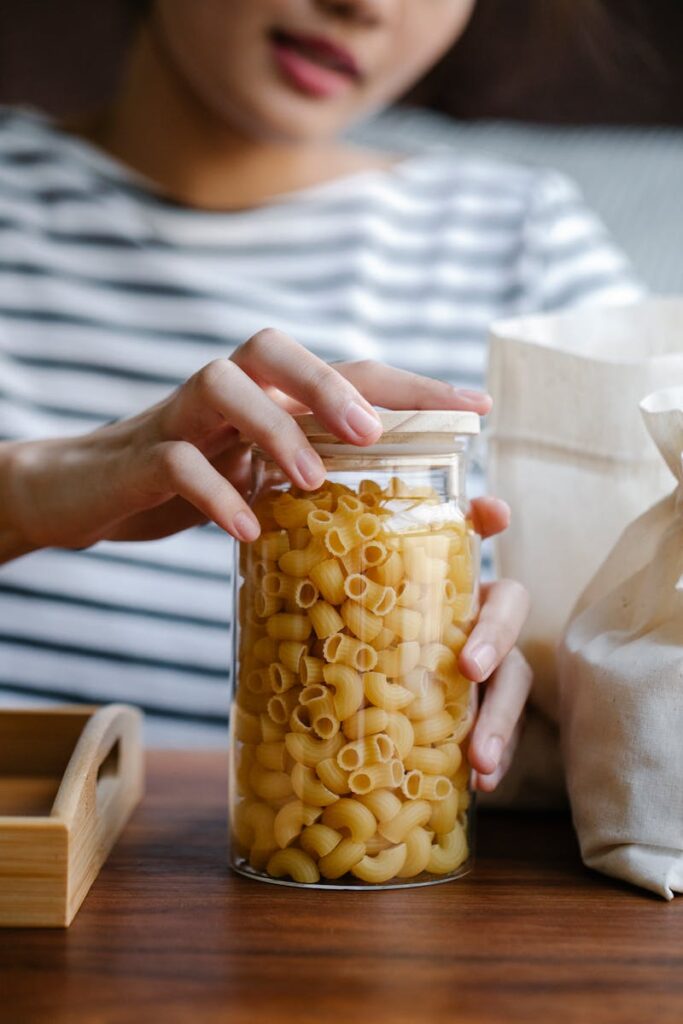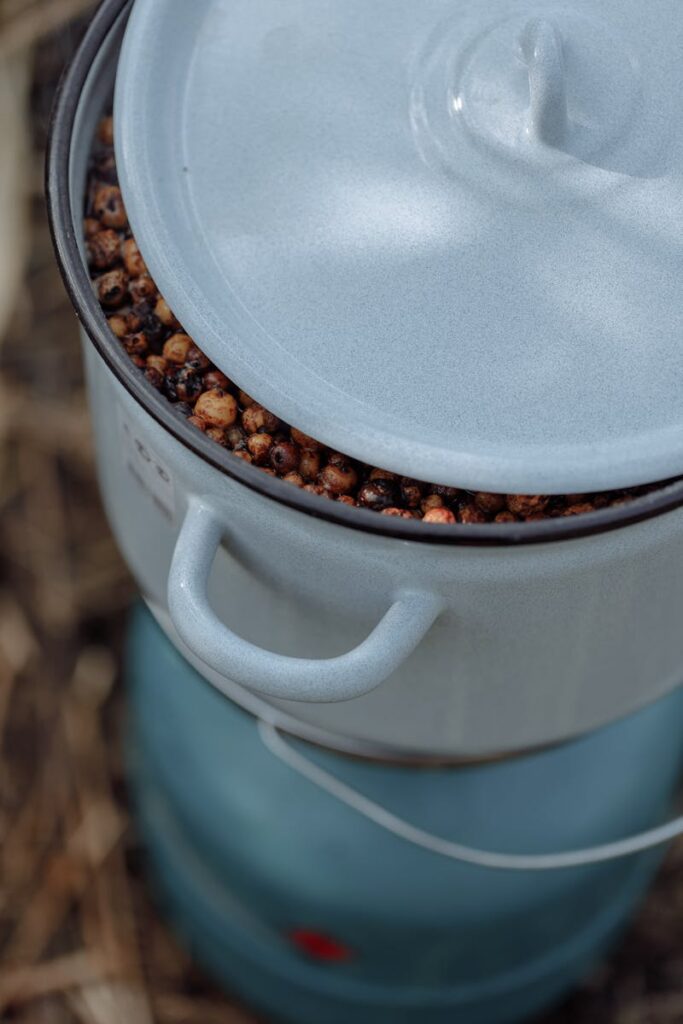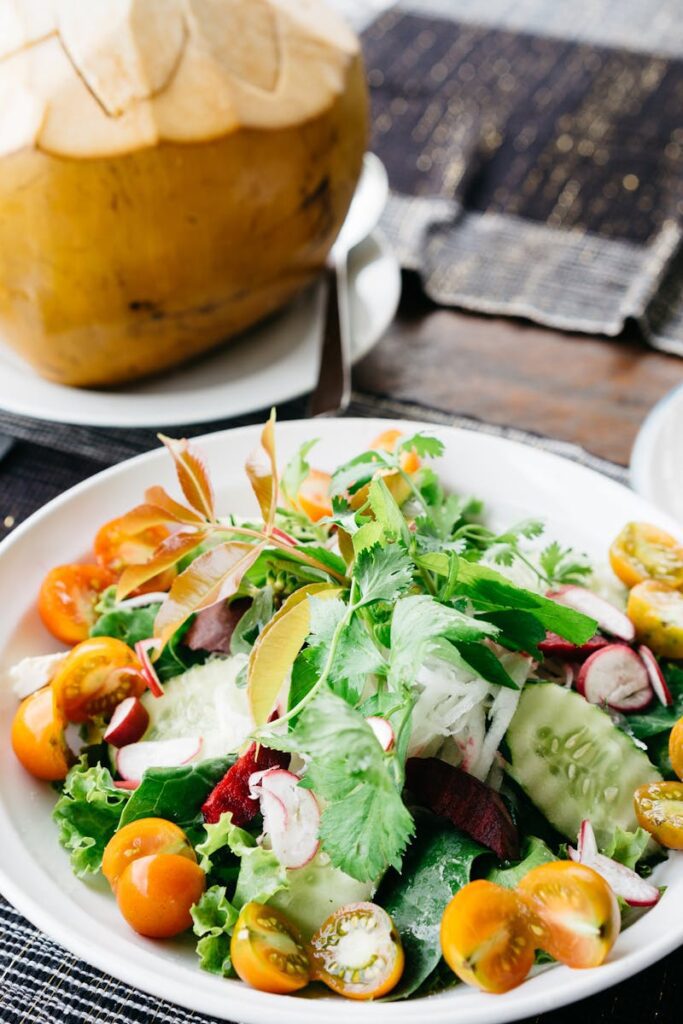Best Tips For An Eco Friendly Kitchen
Creating a sustainable kitchen is a great way to help the planet. By incorporating these Best Tips for an Eco Friendly kitchen in the way we cook, store food, and use resources, we can save energy, reduce waste, and even save money.
Here are our Tips for an Sustainable Living kitchen, we bring you 12 in total!
1. Use Reusable Containers for Storage
Using reusable containers is a simple way to make your kitchen more sustainable. Single-use plastic bags and plastic wrap are convenient, but unfortunately they create a lot of waste since they’re often used once and then thrown away. These single use plastics can take hundreds of years to break down and often end up in landfills or the ocean, harming wildlife.
Instead, try using reusable containers to store your food. Here are a few eco-friendly options:
Glass Jars: Glass jars are perfect for storing dry goods like rice, pasta, and nuts. They’re also great for leftovers because they keep food fresh and don’t absorb smells or stains.
Glass is durable and can be washed and reused for years.

Beeswax Wraps: Beeswax wraps are cloths coated with beeswax that can be molded around food or containers to keep food fresh. They work well for covering bowls, wrapping sandwiches, or keeping fruits and vegetables fresh. They’re reusable, washable, and compostable once they wear out.
Silicone Bags: Silicone bags are flexible, durable bags that you can use for snacks, sandwiches, and even liquids. They’re great for the fridge and freezer and can be easily washed and reused many times. Unlike plastic, silicone doesn’t leach chemicals and is safe for food storage.
2. Plan Meals to Avoid Food Waste
Meal planning is a great way to avoid food waste. By planning meals ahead of time and making a shopping list based on your meal ideas, you can buy only the ingredients you need. This helps reduce unnecessary purchases that may end up spoiling and being thrown away. It also saves money since you’re using up all the food you buy. Take a look at our Kitchen Product Guide to see some of the most affordable and stylish items to help you avoid food waste.
3. Compost Food Scraps
Instead of throwing food scraps, such as vegetable peels, eggshells, or coffee grounds, into the trash, consider starting a compost bin. Composting turns these scraps into nutrient-rich soil that can be used to fertilize plants and gardens. It reduces the amount of waste sent to landfills and helps keep the earth healthy.
4. Use a Lid While Cooking

Using a lid while cooking is one of the Best Tips For An Eco Friendly Kitchen and is one of the most effective ways to conserve energy in the kitchen. When you cook without a lid, a lot of the heat from the stove escapes into the air, meaning your cooking appliance (whether it’s a gas stove or electric burner) has to work harder to maintain the right temperature. This requires more energy—whether it’s gas or electricity.
When you place a lid on a pot or pan, it traps the heat inside. This keeps the cooking temperature consistent and helps the food cook faster since the heat stays focused on the food, not escaping into the air. As a result, you don’t need to keep the stove on as high, and you can turn it down a bit earlier than usual.
5. Choose Energy-Efficient Appliances
When it’s time to upgrade your kitchen appliances, choose energy-efficient models that have the Energy Star label. These appliances use less energy to do the same tasks, which reduces your electricity consumption and helps the environment by reducing the carbon footprint. In the long run, energy-efficient appliances can also save you money on your energy bills.
6. Cook in Bulk and Freeze Extras
Cooking large batches of food, such as soups, stews, or pasta, and freezing the leftovers is a smart way to save time, energy, and reduce waste. By freezing meals, you can enjoy them later without having to cook again. This also ensures that you use up ingredients before they spoil.
7. Eat More Plants
Eating more plant-based foods, such as fruit and vegetables, is an excellent way to help the environment. Plants require fewer natural resources, like water and land to grow compared to meat production. Livestock farming, especially cattle, uses vast amounts of water and land, and it also contributes significantly to greenhouse gas emissions. On the other hand, growing plants like vegetables and legumes needs less water and land space, making it a much more sustainable option. For instance, producing a pound of beef can require up to 1,800 gallons of water, while growing a pound of vegetables or grains takes far less water. Plants also don’t produce methane, a potent greenhouse gas, which is a byproduct of livestock digestion. As a result, one of the Best Tips for an Eco Friendly kitchen is eating plant-based foods reduces your carbon footprint.

8. Use the Whole Vegetable
Instead of tossing vegetable scraps, find ways to use the entire vegetable. For example, broccoli stems and carrot tops can be added to soups, stir-fries, or blended into smoothies. By using the whole vegetable, you get the most out of your produce and help reduce food waste.
9. Try a Reusable Coffee Filter or Tea Strainer

If you drink coffee or tea regularly, consider switching to a reusable coffee filter or tea strainer. Instead of using disposable paper filters or tea bags, these reusable items allow you to enjoy your favorite drinks without creating waste.
They’re easy to clean, and in the long run, they save you money.
10. Store Leftovers Correctly
To avoid food waste, store your leftovers in airtight containers. Label them with the date so you know when to use them before they go bad. Storing leftovers properly keeps them fresh and safe to eat, reducing the need to throw away unused food. Take a look at these glass jars that are an affordable and stylish ways to reduce plastic packaging.
11. Switch to Eco-Friendly Cleaning Supplies
Many traditional cleaning products contain harsh chemicals that can be harmful not only to the environment but also to our health. These chemicals can end up in waterways after they are rinsed down the drain, contributing to pollution and negatively affecting ecosystems. For example, chemicals like chlorine bleach, ammonia, and phosphates can harm aquatic life and degrade water quality, and some of the ingredients in these products have been linked to respiratory issues or skin irritation in humans.
There are eco-friendly commercial cleaning products available that are specifically designed to be safe for both the environment and human health. These products use natural ingredients and biodegradable formulas, avoiding harmful chemicals while still being effective at cleaning.

Many of these brands are transparent about the ingredients they use, and they often feature certifications like the Green Seal or EcoLogo, which help consumers identify environmentally responsible choices.
12. Buy in Bulk to Reduce Packaging
One of the Best Tips for an Eco Friendly kitchen that few people know about is buying food items like grains, nuts, and pasta in bulk. Doing this helps reduce the amount of packaging waste, such as plastic bags and boxes. You can bring your own containers to the store or purchase larger packages that last longer, reducing the need for frequent repurchases and minimizing packaging waste.
